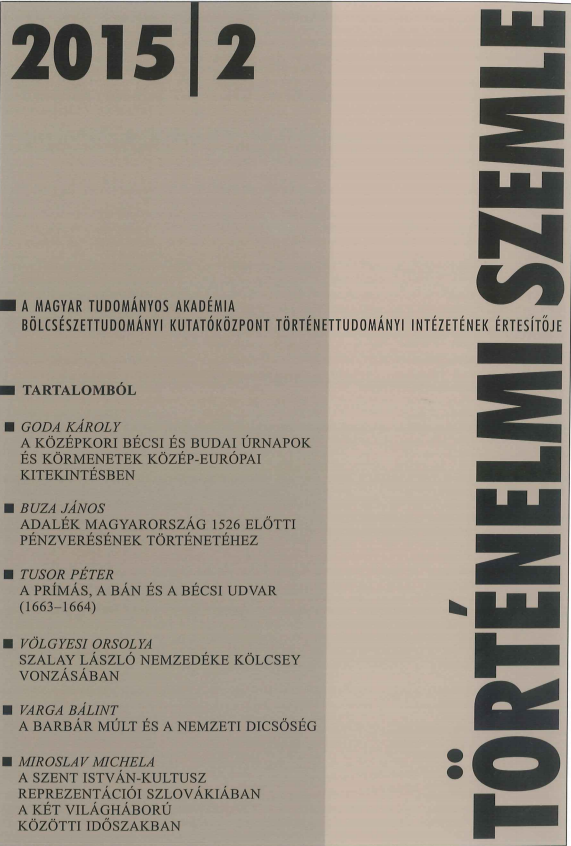„A haza legyen minden gyermekének hazája” - A Szent István-kultusz reprezentációi Szlovákiában a két világháború közötti időszakban
„A Home Should Be a Home to All Its Sons”. Cultural Representations of the Cult of Saint Stephen in Slovakia during the Interwar Period
Author(s): Miroslav MichelaSubject(s): Christian Theology and Religion, Customs / Folklore, Political history, Culture and social structure , Studies in violence and power, Interwar Period (1920 - 1939), History of Religion
Published by: Magyar Tudományos Akadémia Bölcsészettudományi Kutatóközpont Történettudományi Intézet
Keywords: cult of Saint Stephen; Slovakia; interwar period; religion;
Summary/Abstract: The study is dealing with an analysis of political and symbolic levels of the cult of St. Stephen in (Czecho)slovakia during the inter-war period. The author primarily focuses upon the manner in which this formally religious cult was transformed into a „national”. He deals with his representations in Hungarian and Slovak nationalist discourses after the establishing of the Czechoslovak Republic. Different cultural representations of St. Stephen point out to significant confessional, ideological and national narratives, which constructed the cult in the 20th century. The author highlights the fact that the principal consensus was not even arrived at within the proper „nation states” despite the efforts of Slovak and Hungarian ruling elites to enforce their unified (and mutually antagonistic) politics connected to St. Stephen. Although it is not possible to speak about the fully unified „Slovak” or „Hungarian” narrative in connection to St. Stephen’s cult, the author primarily devotes himself to the trends embodied in the power and cultural elites. At the same time he attempts to draw some attention to some micro-levels of the topic. In Czechoslovakia a relatively negative and disapproving attitude towards the cult of St. Stephen gradually prevailed as the cult was linked to the idea of enforced assimilation and practice by the Hungarian elites in the Austro-Hungarian Monarchy (1867–1918). Contrary to that, the dominant part of the Hungarians living in Czechoslovakia shared same beliefs as in Hungary. However, after 1918 St. Stephen came to represent a type of transcendental guarantor that „the extraction from a national community” would not be permanent. Representations reproduced in the inter-war period and disseminated through education in schools and at home also reflect the contemporary situation to a large degree. The author highlights that the past – as a tool of political legitimation – takes on tropical meanings.
Journal: Történelmi Szemle
- Issue Year: 2015
- Issue No: 02
- Page Range: 333-349
- Page Count: 17
- Language: Hungarian

